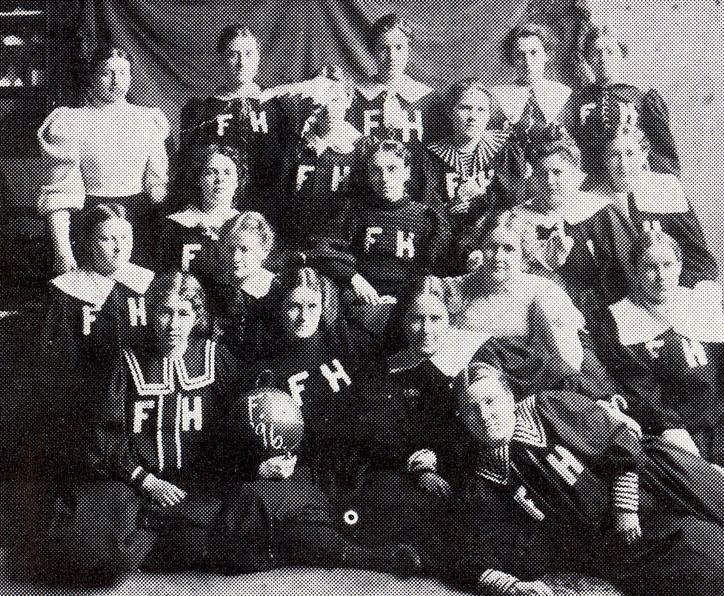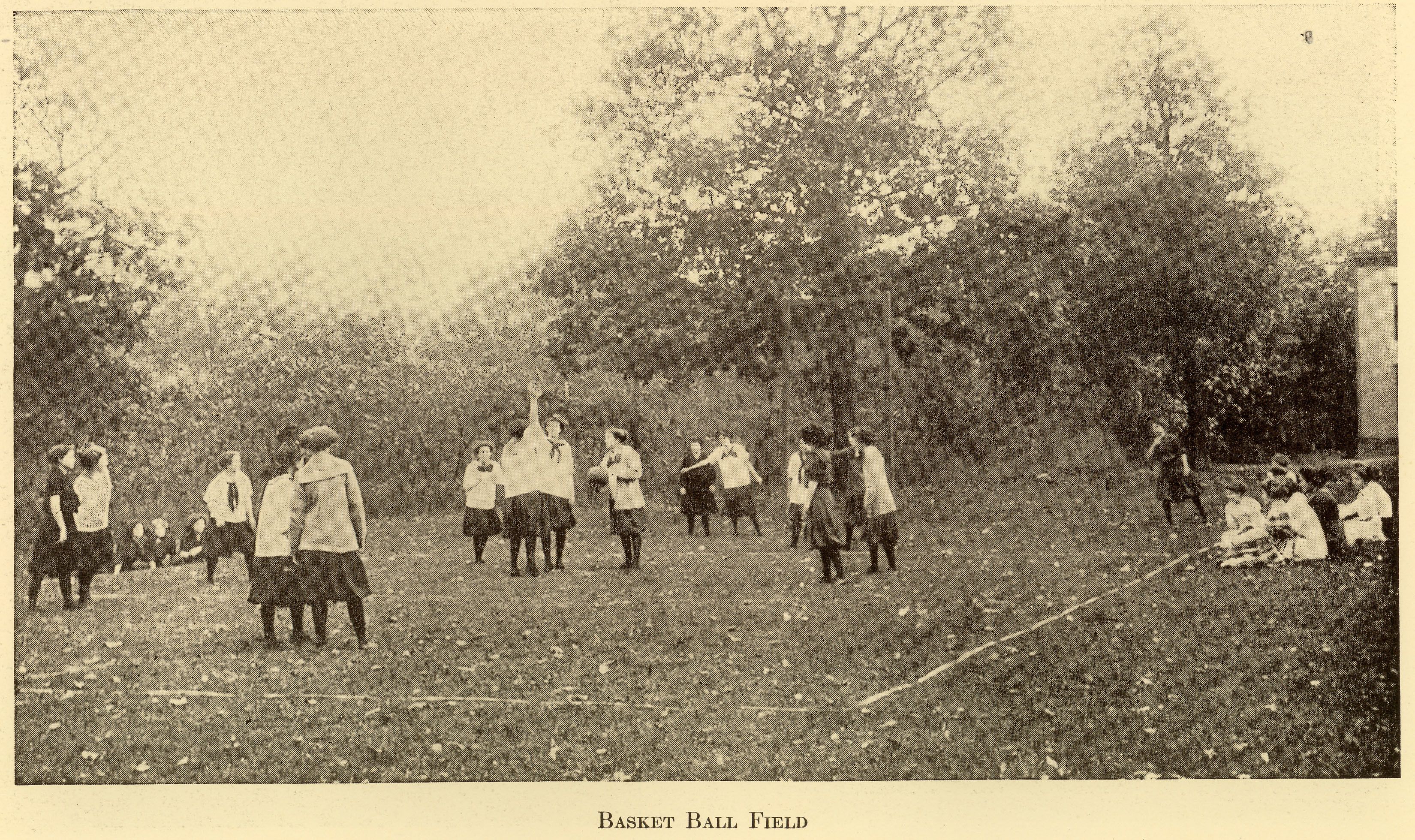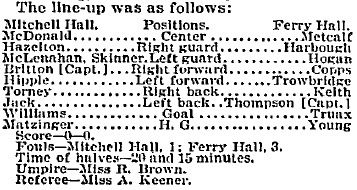Lake Forest Hosts Midwest's First Women's Basketball Game: The Most Exciting Scoreless Hoops Match in History?

In February of 1896 – just five years after Dr. James Naismith invented the sport – excitement was mounting in Lake Forest for Ferry Hall versus Mitchell Hall (Lake Forest University’s female dormitory). Newspapers billed it as “the first match of basketball ever played by women in the West.” They would have to wait a bit longer, though, for the first basket. The final score – 0 to 0, with both teams claiming victory and clamoring for a rematch.

The 0-0 tie was by no means the end of the story. The rematch scheduled a month later fanned the flames of the rivalry into full-fledged hostilities. The second game, a shootout compared to the first, ended in a 9-3 Mitchell Hall victory. The Ferry Hall team immediately claimed bias in the officiating. (They may have had cause: the referee, Rosalind Brown, was a Mitchell student.)
In keeping with the standards of the day, male students were banned from watching their game against Mitchell Hall. The men offered their female counterparts up to $1 for the ten-cent ticket. But “their entreaties fell upon deaf ears.”


The Chicago Daily Tribune article included the lineup of the 0-0 game, which featured such unfamiliar positions as “back,” “goal,” and the mystifying “H.G.” The game of basketball played by Ferry Hall and Mitchell Hall would be almost unrecognizable to us today. The women played nine a side, with the court divided into thirds and three players restricted to each zone. The ball advanced upcourt largely by passing, because players were limited to three dribbles, and could only hold onto the ball for three seconds. The centers jumped after each score; all field goals were worth three points.
